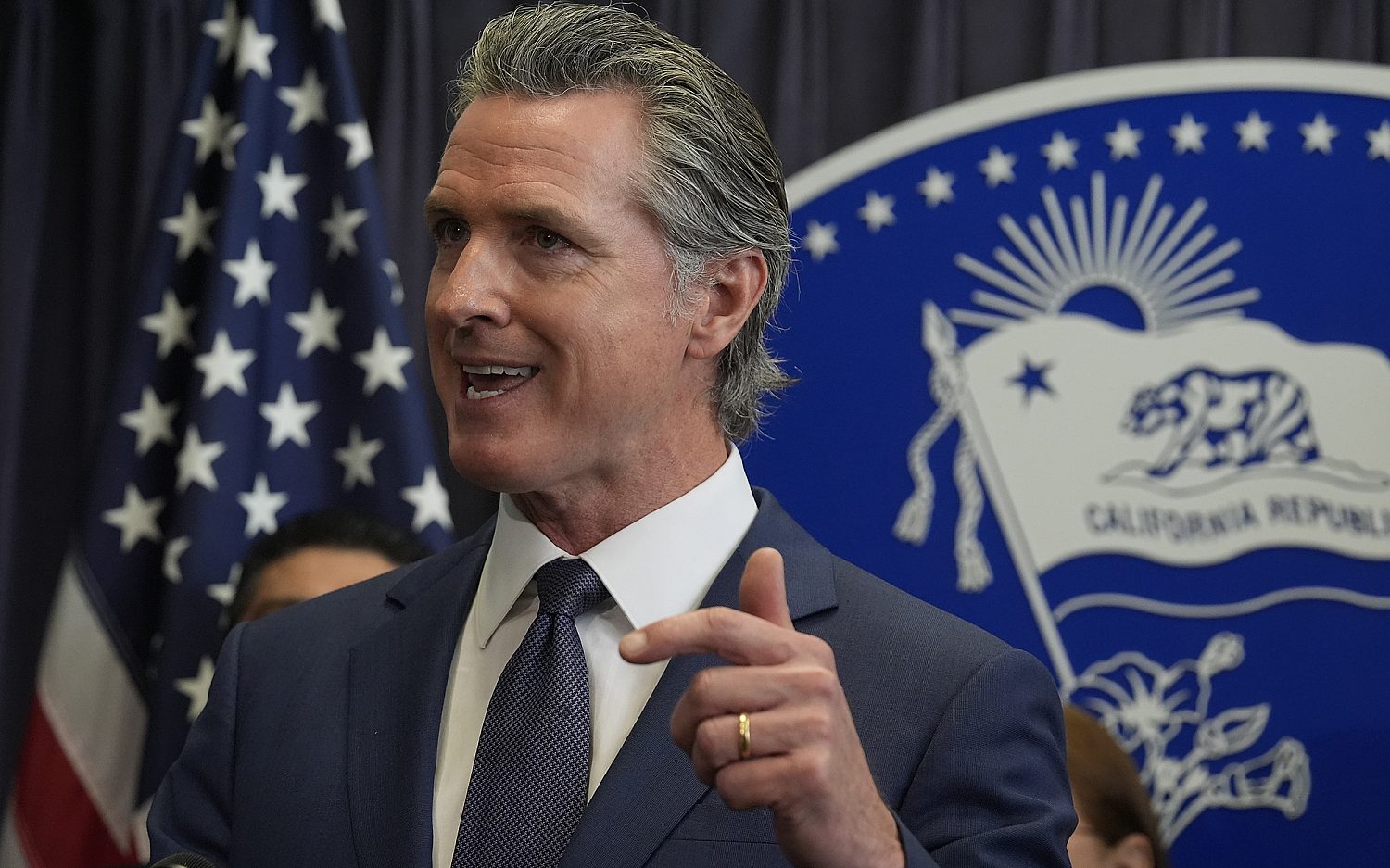The struggle to remain Mission True
An excerpt from WORLD’s Book of the Year runner-up for analysis
WORLD’s editors recently selected Books of the Year in three categories: popular theology, history, and analysis. One of the runners-up in the analysis category is Mission Drift: The Unspoken Crisis facing Leaders, Charities, and Churches by Peter Greer and Chris Horst.
As the leaders of HOPE International, Greer (president) and Horst (development director) know intimately the problems Christian ministries continually face in their efforts to remain true to their founding principles.
“The authors are correct about an ‘unspoken crisis,’ which makes this little book both prophetic and practical,” writes Marvin Olasky in WORLD’s annual Books Issue. “They sketch the clear contrasts between Mission Drift and Mission True organizations, the latter distinguished by humility and faith.”
The excerpt below chronicles the divergent paths taken by two child sponsorship organizations that had almost identical beginnings, ChildFund International and Compassion International. But only one remained “Mission True”: Compassion International, which is also WORLD’s International Region finalist for the 2014 Hope Award for Effective Compassion. —Mickey McLean
Chapter 2: The Tale of Two Presbyterian Ministers
Mission Drift is pervasive, but it is not inevitable
An International Orphan Crisis
“Do you feel that Americans are doing all they can to help?”
Dr. J. Calvitt Clarke, a Presbyterian minister, asked the question of a friend who had been a missionary in China. Clarke knew the right answer. He had traveled enough to understand the plight of orphan children around the world.
His friend replied, “Why don’t you do something about it?”
Clarke pondered the question, knowing his response would likely change his life forever. After a long pause, he responded confidently.
“Alright. I will.”[1]
Wars wreaked havoc throughout the world in the early 1900s. God-fearing men and women couldn’t help but be moved by compassion to care for the vulnerable, the orphan, and the widow. They sought to address the suffering, disease, and poverty they saw. World Vision, Compassion International, World Relief, and many other global ministries launched during the middle of the twentieth century.
The Birth of Child Sponsorship
One of these organizations was China’s Children’s Fund. After his conversation with his former missionary friend, Calvitt Clarke founded the organization in 1938. Clarke was a man of deep convictions about the poor. He had traveled on a number of mission trips around the world and had been affected most by the suffering of innocent children.[2] The first outreach from his new organization was to Chinese children in response to the orphan crisis following the Sino-Japanese War. The ministry expanded and soon changed its name to Christian Children’s Fund.[3]
Clarke cared deeply about ministering the Gospel in word and deed to orphaned children in China. To fund the efforts, Clarke invented child sponsorship, an innovative approach built around connecting donors directly to individual children.[4]
Clarke’s organization escalated to charity celebrity status. Throughout the 1980s and early 1990s, Christian Children’s Fund was all over television. They ran lengthy documentary infomercials hosted by Hollywood pseudo-star Sally Struthers.
During the shows, Struthers covered provocative and tragic stories of global poverty, famine, and war. By 1994, the organization served nearly 2 million children through child sponsorships with a budget of over 100 million dollars.[5] In 2011 Forbes named Christian Children’s Fund one of the 100 largest charities in the country.[6]
An Identity Crisis
But by the 1990s, Christian Children’s Fund’s very identity was called into question. In an interview with Christianity Today, Thomas Naylor, a former board member, said, “This organization has nothing to do with Christianity.”[7]
A decade later, a charity watchdog issued a “donor alert,” warning Christian Children’s Fund may be “misleading many Christian donors” because of its marketing as a Christian organization.[8]
Its president, Anne Goddard, acknowledged the change in the identity of the organization: “An organization changes slowly, and then all of a sudden you realize the changes have happened so much that you need to step back and [see if you are] putting out the name that really reflects who you are.”[9]
In 2009, it changed its name to ChildFund International.[10]
The Second Presbyterian Minister
Just over a decade after Clarke founded China Children’s Fund, a fellow Presbyterian minister, Everett Swanson,[11] visited orphans in war-torn Korea. A missionary friend asked him a dangerous question: “You have seen the tremendous needs and unparalleled opportunities of this land: What do you intend to do about it?”[12]
Swanson was in Korea often. Following the Korean War in the early 1950s, he preached the Gospel throughout the country, wherever he was invited: training camps, military academies, and detention centers.
At the time, the Koreans were a people uprooted—broken by the horrors of war. Through these challenges, tens of thousands professed faith in Christ. Swanson began to mourn for more than the hearts of the Korean people. He grieved that war had ravaged the country, propelling millions into abject poverty. Specifically, he lamented the plight of Korean children. Approximately 100,000 were orphaned from the war.[13]
“On the cold nights, they are found on the streets, alleys, doorways, and so forth, but these boys are precious in the eyes of the Lord. And Christ died to save them,” said Swanson.
Swanson walked the streets of Seoul daily, praying for these hurting children. One morning, with the cold air stinging his face, Swanson saw policemen scoop up piles of rags from a street corner. As he walked closer, he realized these were not rags, but orphans who had died in the freezing conditions overnight.[14]
The experience haunted him. Swanson couldn’t rid his mind of the images.
What do you intend to do about it?
The question burned in his heart. He began asking this question of others. In each church where he spoke, he challenged the congregants to respond to the needs of the people of Korea, not knowing he was creating an organization as he did so. But this simple question planted the seeds of Compassion International. In 1952, Swanson and his passionate sponsors provided food, education, clothing, and spiritual nourishment to a group of thirty-five orphaned and vulnerable children in Korea.
Today, Compassion International serves over 1.3 million children across twenty-six countries. Compassion helps them through local churches, improving their health, education, and life skills, and introducing these children to Jesus Christ.[15]
Reverend Everett Swanson knew his purpose. He founded Compassion to provide for the social, material, and spiritual needs of at-risk youth around the world. Today, over sixty years later, Compassion precisely embodies Swanson’s convictions. And their commitment to the Gospel has not waned. It has only grown more resolute as Compassion has aged.
Despite facing an onslaught of pressures to drift from its founding identity, Compassion hasn’t backed down from its core purpose of meeting not only the material, but also the spiritual needs of children. Wess Stafford, president of Compassion International from 1993–2013, reflected:
When I was the director of development at Compassion back in the 1980s, I brought in outside experts to study our marketing and donor base. I asked, “What do we need to do to grow?” I’ll never forget their answer: “Well, you’ve got the best name in the business, ‘Compassion International.’ Who doesn’t want to be a part of something called Compassion? But you’ve got this Jesus stuff mixed in there. Not everyone compassionate cares about this Jesus that you keep putting out with every piece of material. Our advice is really raise up the name Compassion and sort of soft sell the Jesus stuff. Then watch what can happen.”
We thought for ten seconds, and said, “No, not now, not ever.”[16]
The reason Swanson founded Compassion is the reason Compassion exists today. Compassion has remained Mission True. Their story gave us great hope. They figured out how to protect their mission. They understood their Christian identity and built safeguards around it.
On the surface, ChildFund and Compassion International look like twins. They were founded just fourteen years apart. Both were started by Presbyterian ministers, each with a passion for helping the poor. Both founders had missionary friends who encouraged them to start their organizations. Both were created to help children orphaned after wars in Asia, one in China and the other in Korea. Both use child sponsorship to fuel their missions.
While we read the stories of their foundings, we couldn’t believe the parallels. These two organizations could not have started out more similarly. And today, both are among the 100 largest nonprofits in the country. But they now look radically different. One—ChildFund—stripped “Christian” from its very name. The other—Compassion—beats to the same heartbeat as its founder. How did Compassion manage to protect its identity, even as it grew to become one of the largest charities in the world?
Mission True Defined
The more we learned about Compassion, the more we were encouraged. We began looking for more organizations like them. Finding and celebrating Mission True organizations became our passion. So what is a Mission True organization?
In its simplest form, Mission True organizations know why they exist and protect their core at all costs. They remain faithful to what they believe God has entrusted them to do. They define what is immutable: their values and purposes, their DNA, their heart and soul.
This doesn’t mean Mission True organizations don’t change. And it doesn’t mean they aren’t striving for excellence. In fact, their understanding of their core identity will demand they change. And their understanding of Scripture will demand they strive for the very highest levels of excellence. But growth and professionalism are subordinate values. To remain Mission True is to adapt and grow, so long as that adaptation and growth does not alter the core identity.
To find these organizations, we began asking experts—educators, philanthropists, ministry leaders, and pastors—“Which organizations have remained Mission True?” Dozens of recommendations came back from many different sectors. And we compiled a list of the most commonly recommended organizations. We interviewed them about their secrets to remaining Mission True. (Details of our research can be found at the back of the book.)
We invested hundreds of hours listening to and learning from these organizations. They were diverse. Some were prominent institutions like Compassion, an organization with over a half-billion-dollar[17] annual budget. Some were lesser known, but just as compelling, like Taylor University, a small college located in the cornfields of Indiana. Taylor has faithfully stayed the course for over one hundred fifty years.
Some deployed nearly identical practices as they did at their founding, including The Crowell Trust, a charitable foundation that acts today nearly exactly as it acted in its earliest days in the 1930s. Others have changed dramatically. Young Life, a national youth ministry, initially reached children through barbershop quartets. Their methods have changed significantly over the years, but they have not lost their heart and founding commitment to share Christ with young people.
Some were overtly evangelistic, like InterVarsity, Cru, and Youth For Christ, an organization that first put Billy Graham on a stage and today still exists to introduce young people to Jesus Christ. Others were just as faithful, but fulfilled a different mandate. National Christian Foundation—now the third largest donor-advised fund in the world—is rooted and sustained by their conviction about the Gospel, but they operate much differently than the aforementioned organizations. We wish we could have featured all our favorite faith-based organizations in this book, but we limited ourselves to prevent it from becoming too lengthy.
Flippant Carefrontations
While in an idyllic camp setting, I (Peter) participated in an event with other followers of Jesus eager to positively impact culture. Our goals were to encourage one another and deepen relationships. On the last evening we shared highlights of our time together. The gathering was replete with memorable conversations.
Near the end of the night, one member stood up and began pointing out the flaws of our group. He critiqued the leaders, bemoaned the structure, and challenged our motivations.
Backs stiffened. Jaws clenched.
He hadn’t earned the right to criticize. He hadn’t been invited to critique. His “carefrontation” came from a position of self-righteousness. And so no one listened. His words created a stir but did not encourage any positive change.
It isn’t our intent to offer unsolicited critique. This book is written to equip Christians “in the trenches” who believe Mission Drift is (or could be) a concern. If you are a donor, board member, or staff member at an organization you fear is adrift, we hope this book will equip you to help your favorite ministry stay true to its mission.
Even uglier than finger-pointing is when someone tries to prove they are “more Christian” than someone else. We do not intend to hold up our organization as an ideal. We all have enough planks in our own eyes to pull out before examining the specks of dust in our friends’ eyes.[18]
A third concern in writing Mission Drift is this: Some may interpret this book as an exposé of organizations that have drifted. That’s not our intent either. This book is not a witch-hunt. You won’t find a “Top 10 Drifting Organizations” list. You won’t find any scathing reveals of organizations in the midst of identity crises. Though we profile organizations throughout, we very intentionally chose organizations that have publicly and widely communicated their own drift. Their leaders have openly acknowledged their shifting identity.
The boards and presidents at Harvard, Yale, and ChildFund are neither embarrassed nor private about their drift: They affirm and celebrate it. They believe in their new identity.
From our interviews, we know many organizations are currently wrestling with Mission Drift, but we purposefully avoided mentioning them. We hope this will be a resource for anyone eager to protect and reinforce their mission. The stories of drift we share are meant to edify, and in no way humiliate or disparage.
Finally, we’re concerned this book could undermine organizations we celebrate as Mission True. We have failed in writing Mission Drift if we create the impression that these organizations are immune to drift. We have put these organizations and their leaders in greater jeopardy if this book makes them think they have arrived. Remaining Mission True is a constant pursuit. As in the second law of thermodynamics, cooling is inevitable unless leaders regularly infuse heat and energy into fueling and safeguarding their missions.
If this book reads like the overzealous and self-righteous friend eager to critique others or makes Mission True organizations take pride in their accomplishments, we will have failed those who have drifted and failed those who have remained true. If Mission Drift becomes a bully stick for boards and leaders—in either direction—we have dreadfully missed the mark.
Our aims are fairly simple. We want to name and illustrate the causes of Mission Drift. We want to help you clarify the missions of the organizations you most love. And we want to equip you with the safeguards to reinforce and protect them.
Choose This Day
Mission True organizations decide that their identity matters and then become fanatically focused on remaining faithful to this core.
The key to Mission True organizations isn’t a charismatic leader. If it was, they’d have Mission Drift within the second generation if the inevitable leadership transition wasn’t flawless. Compassion and the other organizations we profile in this book do not possess a mysterious set of practices and principles only applicable to them. Rather, their practices are transferrable to any organization, denomination, or ministry. These are what we identified as Mission True qualities.
We hope that these observations and supporting stories will compel you to consider the implications of ignoring the crisis lurking in all our organizations and, even deeper, in our hearts. Our research led us to an uncomfortable conclusion: The pressures of Mission Drift are guaranteed. It is the default, the auto-fill. It will happen unless we are focused and actively preventing it.
In marriage, if we stop working on our relationship and just rely on the spark we had during our early days, we know how the story will end. In a similar way, organizations relying on the zeal of their founders will experience Mission Drift if they aren’t actively and regularly working to protect and enhance the mission.
Will we choose to do the hard work of protecting our mission?
After leading the Israelites into the Promised Land, Joshua knew his nation stood at a decision point. After laying out their history, he made it clear that they had a choice to make:
But if serving the Lord seems undesirable to you, then choose for yourselves this day whom you will serve, whether the gods your ancestors served beyond the Euphrates, or the gods of the Amorites, in whose land you are living. But as for me and my household, we will serve the Lord.[19]
Mission Drift and You
In writing this book, we changed our hypothesis. Initially, we saw Mission Drift as an organizational issue. But as organizations are made up of individuals foiled by pride and sin and allured by success, we concluded that this unspoken crisis isn’t an organizational problem. It’s a human one. We found Mission Drift wouldn’t be a problem if humans weren’t involved. But alas all organizations—every last one of them—have humans at the helm.
God has called us to lives of faithfulness. And this is the lifeblood of Mission True organizations.
At the end of his life, Paul said to his son in the faith, Timothy, “I have fought the good fight, I have finished the race, I have kept the faith.”[20]
What a striking statement. While Paul knew he was far from perfect—even calling himself the “worst” of sinners[21]—he had an undivided heart, one grounded in the recognition of Christ’s unlimited love. Through Christ, Paul did everything in his power to remain obedient to his mission.
Our hope for us, for you, your organizations, your church, your ministry—these missions you love and support—is to do the same.
The Gospel of Jesus Christ is the very thing our world so desperately needs. And the infusion of the Gospel in our organizations is what we most need to protect. Surprisingly, it took a journalist, a Hollywood star, a rabbi, and an atheist to remind us why.
From Mission Drift: The Unspoken Crisis facing Leaders, Charities, and Churches by Peter Greer and Chris Horst. Published by Bethany House Publishers, a division of Baker Publishing Group. Copyright © 2014. Used by permission.
Notes
1. Larry Tise, A Book About Children: Christian Children’s Fund 1938–1991 (Rapidan, VA: Hartland Publications, 1992), excerpted at http://homepage.isomedia.com/~awin/CCF/Creation.html.
2. Ibid.
3. ChildFund International, “ChildFund History and Story” www.childfund.org/about_us/mission_and_history/ChildFund_History.aspx.
4. Ken Walker, “Sponsoring a Movement,” Christianity Today, June 2013, www.christianitytoday.com/ct/2013/june/sponsoring-movement.html?paging=off.
5. Randy Frame, “Christian Children’s Fund Probed,” Christianity Today, November 14, 1994, www.christianitytoday.com/ct/1994/november14/4td071b.html.
6. William P. Barrett, “The 200 Largest U.S. Charities,” Forbes, November 30, 2011, www.forbes.com/lists/2011/14/200-largest-us-charities-11_rank.html.
7. Randy Frame, “Christian Children’s Fund Probed.”
8. “How Christian Is Christian Children’s Fund?” Ministry Watch Donor Alert, May 2004, www.ministrywatch.com/mw2.1/pdf/MWDA_042704_CCF.pdf.
9. Abny Santicola, “What’s in a Name?” Fundraising Success, January 2010, www.fundraisingsuccessmag.com/article/a-lot-found-childfund-international-to-dispel-misconceptions-better-communicate-the-global-scope-its-brand-70-year-old-organization-recently-embarked-brand-makeover-has-invigorated-staff-and-donors-alike-415393/1.
10. Mark Hrywna, “The Name Game,” The NonProfit Times, June 15, 2009, www.thenonprofittimes.com/article/detail/the-name-game-2376.
11. Kathleen Ja Sook Bergquist, International Korean Adoption: A Fifty-Year History of Policy and Practice (New York: Routledge, 2007), 39.
12. “Compassion’s History—1950s,” Compassion International, www.compassion.com/about/history/1950s/.
13. Phil de Haan, “50 Years and Counting: The Impact of the Korean War on the People of the Peninsula,” Calvin College, May 2002, www.calvin.edu/news/2001-02/korea.htm.
14. “Man of Compassion,” Advocates Network Compilation DVD, produced by Compassion International.
15. “Financial Integrity,” Compassion International, www.compassion.com/about/financial.htm.
16. Tami Heim, “More on Leadership from Dr. Wess Stafford,” Christian Leadership Alliance, April 3, 2013, http://blog.christianleadershipalliance.org/2013/04/03/more-on-leadership-from-dr-wess-stafford/.
17. Annual Report 2011–2012, Compassion International, 2012, www.compassion.com/multimedia/compassion-international-2012-annual-report.pdf.
18. Matthew 7:3–5
19. Joshua 24:15
20. 2 Timothy 4:7
21. 1 Timothy 1:15
An actual newsletter worth subscribing to instead of just a collection of links. —Adam
Sign up to receive The Sift email newsletter each weekday morning for the latest headlines from WORLD’s breaking news team.




Please wait while we load the latest comments...
Comments
Please register, subscribe, or log in to comment on this article.